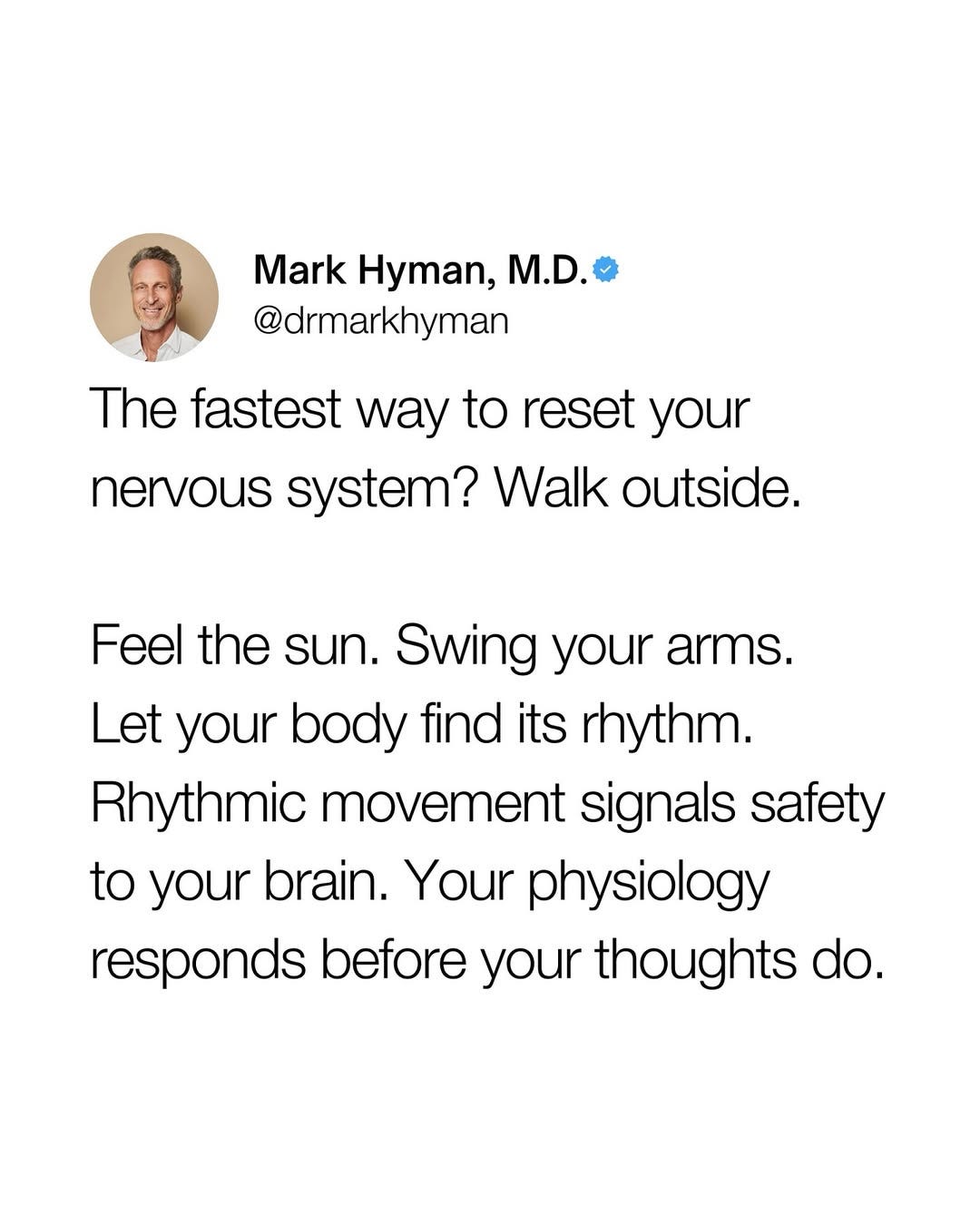If you’re a long-time reader of this newsletter, or you’ve listened to the podcast or heard me speak at Seed Talks, you’ll probably know the story: I had five massive seizures in 2016, which led to an ADHD diagnosis in early 2017.
What most people don’t know is that not long after the diagnosis, I started something called unstructured movement with Mike Doxey.
Unstructured movement is basically a mix of yoga, Pilates, dance, gymnastics, Olympic rings, and more. Imagine very active yoga meets calisthenics meets flow. The key thing is, there are no repetitive movements. You just create sequences as you go. It forces you to move in a really expansive way, using your whole body.
(Emphasis on the word create — with unstructured movement you’re not memorising a flow (like in yoga). You’re learning how the body moves so you can improvise. It’s extremely freeing.)
For me, it’s helped me open up. Physically AND emotionally.
When your posture is upright, you feel more confident. But trying to force good posture is hard. What I found through working with Mike was that it just happened naturally. I developed a more upright, grounded posture, and that gave me more confidence in everyday life.
It also started to realign my body.
I played a hell of a lot of cricket growing up, and the right-hand side of my back is way more developed than the left. That kind of imbalance puts the body under stress. Working with Mike helped me move towards better alignment. It’s not perfect, but the reduction in strain on my spine, hips, and knees made a big difference. I went from stiff ex-rugby-player to someone who could do a handstand and hold it.
Every time I finished a session, I felt amazing. I could feel it regulating my nervous system. A lot of my ADHD symptoms would start to fade.
The Evidence: Movement Regulates the Nervous System
This morning, I went for a long walk. My autistic son had us up from 2:30am to 7am, bouncing on the bed. I woke up feeling tense and anxious. But after walking with him in the wheelchair, I felt better.
That’s because movement regulates the nervous system. Even a short walk can do it.
Coming Back to It: Taking Movement Seriously Again
Very recently, I reconnected with Mike.
This time, I’m taking it seriously. Straight away, we got back into unstructured movement. I was down in a squat, coming up into something like a tree pose, one leg in the air, arms flailing.
Maybe it sounds extreme, and in some ways it is. But doing this kind of movement has made me much more aware of how my body and brain are connected. One thing that’s become really clear is that I can’t focus when I’m sitting down. I’d go as far as to say it’s impossible. Right now, as I’m writing this, I’m standing. I’m swaying a bit, almost dancing, moving side to side, and it’s keeping me focused.
Whether it’s walking, running, dancing, climbing, swimming, yoga, Pilates, standing up to work, writing emails while walking, or talking into your phone, the more you move, the better you manage the tougher parts of ADHD.
A Side Note on Fasting
I’ve also just started intermittent fasting again, eating between 12pm and 8pm. That’s it. When I do this, I lose weight, yes, but more importantly, I can focus a lot better.
And this isn’t just my experience. There’s research to back this up. Proper meta-analyses have shown fasting improves focus, brain health, and attention. It increases BDNF, a brain chemical linked to memory and neuroplasticity.
Here are a few of those studies if you’re curious:
Effect of time-restricted eating and intermittent fasting on cognitive function and mental health in older adults: A systematic review (2024) — Time-restricted eating and intermittent fasting in older adults showed improvements in cognitive function and mental health. Read it here.
Intermittent fasting and health outcomes: an umbrella review of systematic reviews and meta-analyses of randomised controlled trials (2023) — This umbrella review summarised effects across multiple studies, finding consistent benefits in both metabolic and cognitive outcomes. Read it here.
Effects of Intermittent Fasting on Brain Metabolism (2022) — Intermittent fasting was shown to increase BDNF, reduce inflammation, and improve attention, learning, and mood. Read it on PubMed Central
If you look back 12,500 years, we were hunter-gatherers. We didn’t worry about pensions or home extensions. We hunted, we gathered, we ate, and then we rested. We understood the concept of “enough” far better than we do now.
When I eat, I feel my motivation drop. That feels biological, like my body is saying, “You’ve got what you need. You can chill.” But when I fast, those first few hours of the day are magic. I’m sharp, I’m productive, and I often get more done by lunch than I would in a full day. Sometimes by 1pm, I’ve done everything I need to.
If I had to sum it up, movement plus fasting equals a quieter ADHD brain. Less noise. More clarity. More peace.
👋🏼 I’ve just launched Group Coaching!
If you want to manage ADHD with skills (not pills), alongside other ADHD-powered people — and get the connection, support, and accountability you need to make it stick, click here to read all about it.
Or, apply here, if you’re ready to get started.




